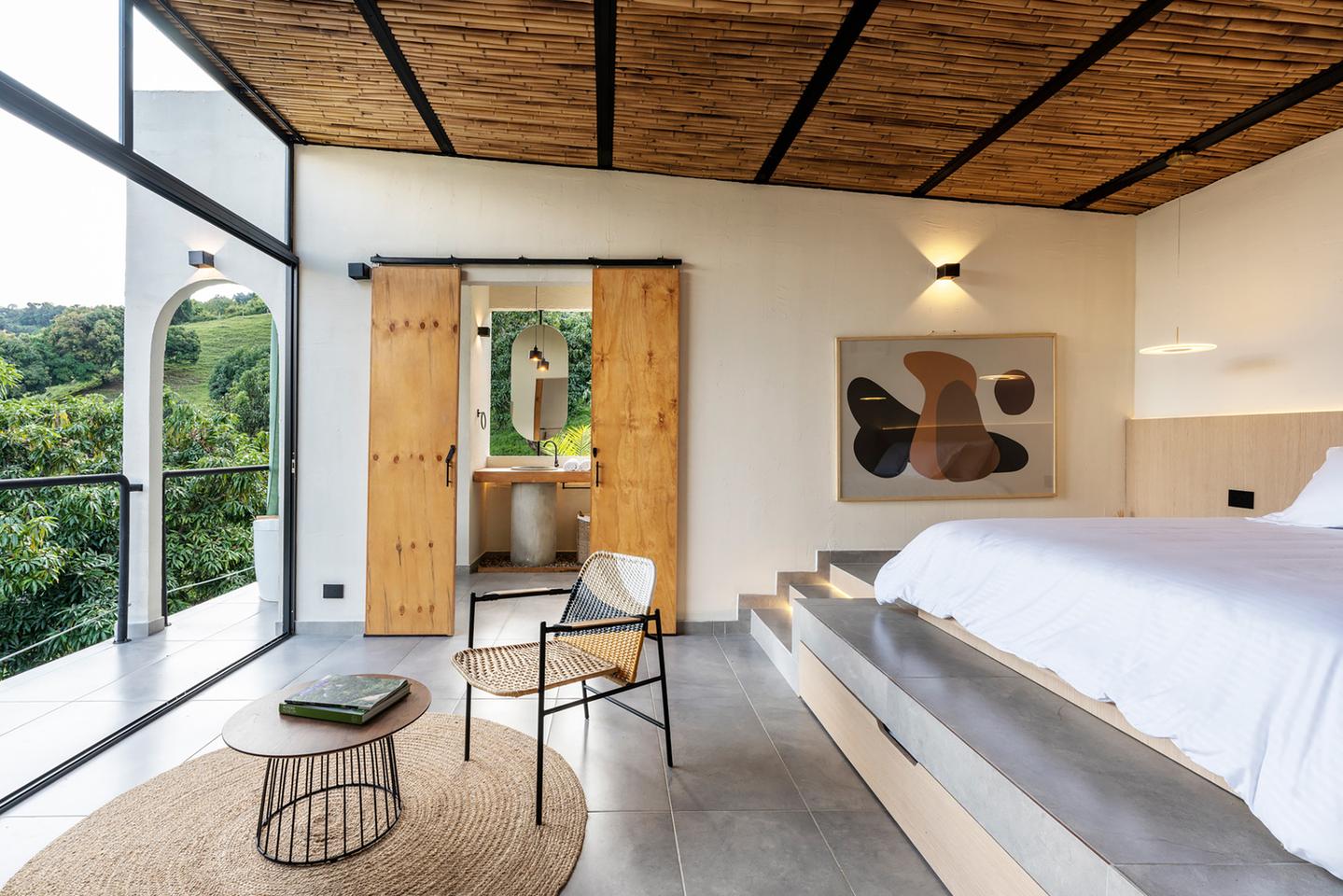Colombian architectural firm PAE has created an open-air tiny house that is built into the lush hillside of Anapoima, Colombia. Dubbed Casa Caoba, the home is nestled amid a pre-existing mango grove, and boasts a minimalist design that embraces the the lush outdoor setting. Positioned 900 meters (2,953 ft) above sea level, the home is constructed on a stone foundation that conforms to the steep terrain of the plot.
Casa Caoba consists of five parallel walls that extend outwards, forming the four residential units of the dwelling. Furthermore, the architects have incorporated an open-air element to the structure, where the open walls serve to facilitate passive airflow throughout the entire home. To achieve this objective, the floorplan of Casa Caoba minimizes the layout of longitudinal walls and incorporates openings in the transversal walls.
By seamlessly blending the home with the surrounding landscape, the architects have created a space that is truly in harmony with its environment. The microclimates created by the open-air design are also noteworthy. The design channels cold air from the mountain-side of the home – providing natural cooling – while the walls serve as thermal mass, regulating the temperature inside. That feature is particularly important in this part of the world, known for its high temperatures throughout the year.

Mateo Pérez Correa for PAE
Casa Caoba is characterized by the use of locally sourced stone, timber and bamboo that are readily available within the region. The entire project is adorned with bamboo ceiling slats, and local craftsmanship was employed for the pine wood and carpentry of the teak furniture. The tiny home boasts a cohesive design language that is contrasted by the use of stone and concrete materials, while the use of wood adds a cozy and welcoming feel to the interior.

Mateo Pérez Correa for PAE
Moving through the interior of the home, Casa Caoba features an open-air minimalist kitchen and dining area that also doubles as the home’s entrance. The dining zones adjoins the central module or relaxation terrace, complete with a plunge pool and outdoor lounge. This central module serves as a space for reflection and re-connection with nature. To create this atmosphere, the southern part of the module is left uncovered to allow natural light to filter in all day long, while the north side is adorned with local vegetation.

Mateo Pérez Correa for PAE
The next section of the home features a large master bedroom, complete with a raised level for the bed, facilitating ample hidden storage underneath. The bedroom is adjoined by the striking open-air bathroom, complete with concrete flooring, open-air bath with draw curtains for privacy, concrete basin with floating mirror, and extra large stone-walled shower.
Casa Caoba represents a new era of sustainable and unconventional architecture that prioritizes coexistence with nature, without the need for a large and imposing structure. The use of natural ventilation and passive cooling techniques further underscores the home’s innovative eco-design and functionality. The result is a beautiful tiny home that seamlessly blends with the surrounding ecosystem, without sacrificing on comfort or style.
Source of Article